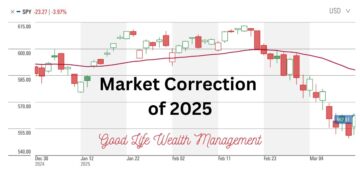Home Bias is the tendency for investors to prefer, and greatly overweight, the stocks of their local, domestic companies to the detriment of their portfolio’s performance. If you lived in Sweden, where local equities comprise only 1% or so of the world’s equity markets, and still had most of your money in “domestic” stocks, you’d obviously be missing out on a great deal of opportunities and diversification.
From our vantage point here in the United States, the local Swedish investor is likely losing out by only investing locally. As obvious as that example appears to us, many US investors do the same thing. Today, US stocks comprise only half of the value of equities worldwide and represent only 25% of the total number of stocks. Both figures are likely to drop significantly in the decades ahead as foreign populations, economies, and stock markets grow at a pace much faster than here in America.
50 years ago, or even 25 years ago, it was difficult to invest in international equities, so investors stuck with local stocks out of necessity. Today it is as easy to invest in foreign stocks or bonds as it is to invest in domestic securities, and yet many investors still have little or no weighting in foreign holdings in their portfolios.
By allowing their Home Bias to persist, investors miss out on the benefits of diversification. Fidelity published a study this August, looking at US versus Foreign stock performance from 1950 through 2014. Over this period, US stocks had an annualized return of 11.3%, slightly ahead of the foreign stock return of 10.9%. Since foreign stocks lagged US stocks, you might think that adding them to a portfolio would make your return worse. Remarkably, that isn’t the case: a portfolio of 70% US / 30% Foreign equities produced a return of 11.4% over this period.
Adding foreign stocks improved returns because of diversification and rebalancing – when US stocks are down, foreign stocks may be up, or vice versa. In addition to increasing returns, the 70/30 mix also reduced volatility (standard deviation) from 14.4% to 13.1%. The Fidelity study is a great example of how diversification can help investors improve returns and lower risk at the same time. People who think that foreign stocks are riskier than US stocks aren’t looking at the bigger picture of what happens when you combine both types of stocks into one portfolio.
In recent years, US Stocks have performed well and as a result, carry a higher valuation today than Developed Market or Emerging Market stocks. If you are concerned about shifting some of your US funds to an international fund that has a worse 5-year track record, you may be placing too much weight on past performance – looking backward – rather than looking forward. The lower valuations found today in foreign stocks are a positive sign that there are opportunities for growth there. That’s no guarantee of what those stocks will do in the short-term, but generally, I think this is a smart time to be shifting from US to foreign stocks if you are underweight on the foreign side.
One of the ways we try to remove the behavioral “safety blanket” of familiar domestic equities, is through our benchmark. We run five portfolio models here at Good Life Wealth Management. Our benchmark for equities is the MSCI All-Country World Index (ACWI), and for a global portfolio that is a more appropriate benchmark than a US-only index like the S&P 500, Dow Jones Industrial Average, or the NASDAQ composite. The ACWI is currently 52% US Stocks and 48% Foreign stocks. I’m not saying that everyone needs to be invested in exactly that percentage (52/48), but by using the ACWI as a benchmark, we have the best measure of the performance of global equities. Then we can look at our own performance and see if the segment weightings we have selected were able to add value or not.
The internet has revolutionized business and today we truly have a world economy. It’s time that investors lose their Home Bias so they don’t miss out on the benefits of diversification. Using the All-Country World Index as our benchmark is a good way to start thinking globally in terms of our opportunities and how we create a portfolio.








2 Comments
Comments are closed.